Tehran is the capital city of Iran , bearing the traces of deep-rooted Persian civilizationIt is the symbol city of Persian civilization and Iranian history with its magnificent palaces, museums where rare artifacts are exhibited, lush parks and gardens and wide squares witnessing important events in the country’s history. It is built on a plateau surrounded by high hills, at the foot of the Elburz Mountains in the north of Iran.
As the most populous city in the country, it is the center of politics, economy, industry and culture. While it was an ordinary place until the end of the 1800s, it has transformed into one of the largest cities in the Middle East with a great change in the last hundred years. It’s hard to imagine that it was a small village 200 years ago.

Tehran, Capital of Contradictions
Tehran is literally a center of contrasts, where the modern face of the city succumbs to the traditional face. While North Tehran is the symbol of wealth and modernism, South Tehran, which has an older past, has been the center of poverty and a conservative religious life.
Tehran, with a population of over 18.5 million including its suburbs, is located in the north of Iran. Tehran, with its magnificent palaces, museums containing rare artifacts, large squares, many parks and gardens, is a city that is not pleasing to the eye in general, even though it has buildings decorated with Persian culture and art and built with aesthetic concerns.
In the neighborhoods outside the central areas, the houses are 2-3 storeys. Most of the houses built with traditional Iranian architecture are made of yellow bricks and since there is no plaster or paint on them, a yellow color dominates the whole city. Its crowded population and unbearable traffic have given the city a chaotic identity.
The traditional atmosphere of the modern image of the city is hidden in places. While the north of Tehran is the symbol of modernism, where the wealthy live in the city, south Tehran is the stronghold of poverty, traditional life and conservatism.
Since Tehran street signs are prepared in English other than Persian, it becomes easier to find directions with a map or Google Map. The streets are very different from the one envisioned. Interestingly, despite being in a sharia-ruled country, I never felt like I was under sharia atmosphere.
Iran is an Islamic Republic and there are many Shariah rules that both residents and visitors to the country have to follow. Although the rules that were applied very harshly after the 1979 Islamic Revolution have been loosened a little more with the rising reaction of the people, serious interventions can be made from time to time.
Although the country is governed by Islamic rules, it seems as if 80% of the people do not want to abide by it. At least that’s what everyone I talked to said. When you look at the way they dress on the street, the number of veiled women and the girls with half their hair exposed, this can be understood a little.

Almost everyone I spoke to and met was advocating a modern and open-minded life. It should be noted that the level of education is quite high.
The streets are also contrasted; While there are women in chadors on one side, Iranian girls are competing with each other in beauty and ornament, with their face with lots of make-up, their eyes with kohl’s eyes and their hair falling out from under their headscarves, which is the only place they can show.
It is necessary to write an article on its own to describe Iranian women with their big eyes and eyes that do not hesitate to make eye contact. On the street, you come across someone with an aesthetic nose at every step of the way. Not only women but also men do this, and it’s even considered a showpiece.
Vehicle traffic, where there is almost no rule, makes it difficult to explain how these calm, elegant people are so aggressive. The chaotic traffic and the suffocating polluted air in this uncontrolled, fast-growing city are quite disturbing. Having traveled in Asia for a long time without medication despite having allergies, I realized on my first day in Tehran that I could not do without medication.
Despite its appearance as a junkyard, the favorite car of Iranians watching hundreds of thousands in traffic, Paykan (meaning Arrow), was produced in partnership with the French Peugeot company between 1967 and 2005 and was discontinued due to the damage it caused to the environment. The number of luxury cars is increasing day by day.
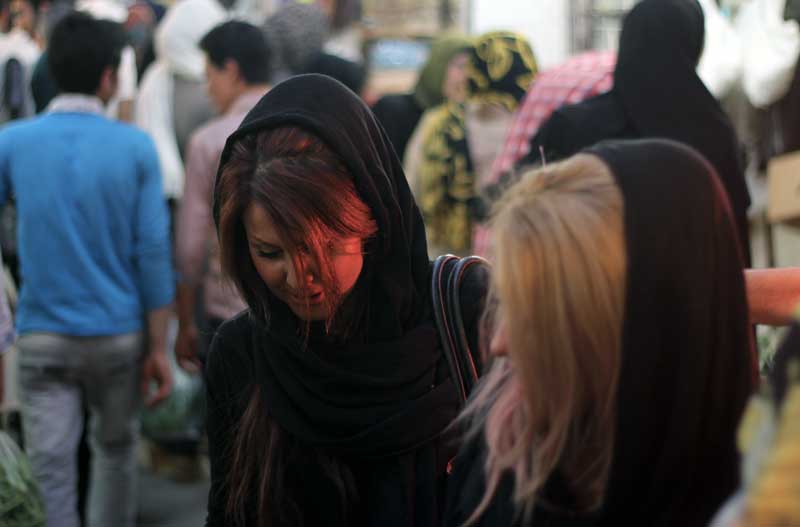
After solving the money issue, I bought a GSM line from a mobile shop near the Turkish Embassy by giving a photocopy of my passport. It was almost twice as much as Asia in terms of both card price and internet usage fee.
Along with Twitter, Facebook and Youtube, nearly 5 million websites were censored. Fortunately, Instagram was not blocked and I could make all my instant posts from here and share them with Facebook and Twitter.
Internet use and texting are very common among young people. Young people, who are under pressure and cannot meet, have turned to social media or virtual chat conversations. There are also many who manage to break the system by paying subscriptions to systems called proxy.
Tehran Travel Guide
Tehran , the official name of the Islamic Republic of Iran, is the capital and largest city of Iran. Tehran, which was a quiet town until 200 years ago, is the most populous city in Iran with a population of close to 80 million, with a population of over 15 million.
Tehran, a village connected to the city of Rey, the former capital of Iran, began to develop as a city after Rey was destroyed by the Mongols in 1220, with many immigrating to Tehran. Tehran, which was captured by Agha Mohammad Khan, the Founder of the Qajar Dynasty in 1785, was declared the capital city in 1788.
Tehran, which started to develop from this year, has remained the capital of Iran unchanged until today. Tehran, which grew up during the Shah Reza Pahlavi Era (1925-1941), who ascended the throne after the overthrow of the Qajar Dynasty in 1925, rapidly modernized with the effect of oil revenues between 1941-1979, when Mohammad Reza Pahlavi was in power.
Iran, which entered a short period of pause after the 1979 Islamic Revolution, in which the Iranian Islamic Revolution took place, is today the largest and most developed city of Iran, despite the embargoes of the United States and some western countries.
In Tehran, which is also called the city of contrasts in Iran, income differences and lifestyles have transformed the city into a bipolar state. While the north of Tehran is the region where people with a more wealthy and secular perspective live, the poor and conservatives live more in the south.
The official language of Iran is Persian spoken in Tehran. The musical color and harmony of Persian speaking is quite impressive. I’ve never heard my name pronounced so beautifully in my life: Ke’maaaayl. My dear (dear) address is also frequently used. Young people in the city speak English, but it’s hard to find a middle-aged person who can speak the language.
If you have language problems, speak Turkish instead of English. One third of the country consists of Azeri Turks. It’s easy to communicate with hospitable and friendly young Iranians in tourist spots. The Iranian currency is the Rial. Tehran is 1.5 hours ahead of Turkey.
Although I stayed in Iran for 23 days, I could not understand the Iranian currency. Although the official currency of Iran is Rial (IRR), everyone in the country uses the word Tomen (Tumen) instead. 1 Toman means 10 Rials. When asking a price for something in Iran, it is useful to ask whether the numbers spoken are Riyals or Tomans. Even if you get used to it after a while, it can take time to understand.
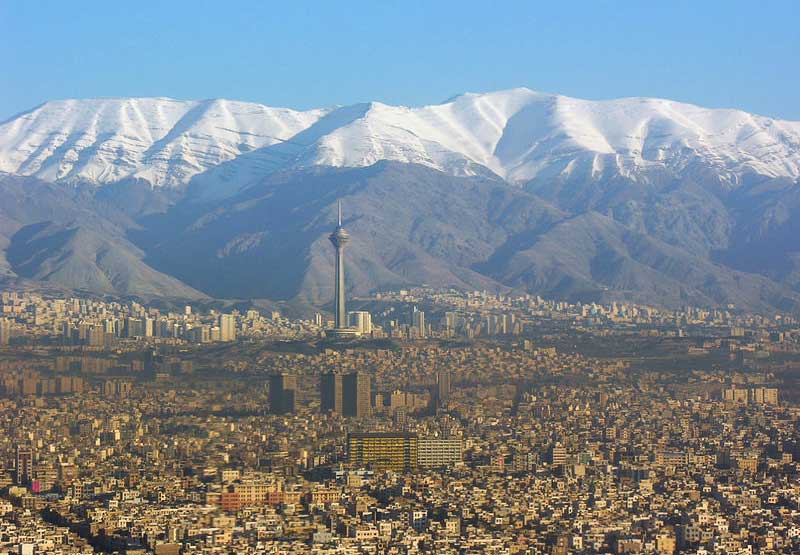
For our Tehran trip, we left the Couchsurfing house where we stayed with my Pakistani friend Zeeshan early in the morning. Hossein, whose house we stayed at, gave us some suggestions on how to spend the day. Our first job was to convert the dollars in our pocket to the Iranian currency, Riyal.
The most convenient place to change money is the currency exchange kiosks around Ferdosi Square. They give a better exchange rate than the banks, and the transactions are settled in a very short time. As soon as you enter the square, standing exchange offices surround you with wads of money in their hands.
After I exchanged $400, I had so many piles of Iranian Rials that I couldn’t fold and fit in my pocket. I can say that I had a hard time even placing it in my backpack. I would later learn that this amount of money would be more than enough for my 23-day trip to Iran.
Tehran Attractions
Although Tehran is not very rich in terms of historical buildings and ruins, it is more than worth seeing with its many museums and urban artifacts. The city stands out with its palaces, museums, squares, parks and gardens.
When you got tired after visiting the National Jewelry Museum , Imam Khomeini Mosque , Sadabad Palace (Sa’d Abad Museum), you first spent some time on Modern Tajrish Street and then went to the summer resort called Derbend .
Golestan Palace, Tehran Bazaar (Tehran Bazar), National Museum (The National Museum of Iran) and other places to visit will not fit in 1 day.
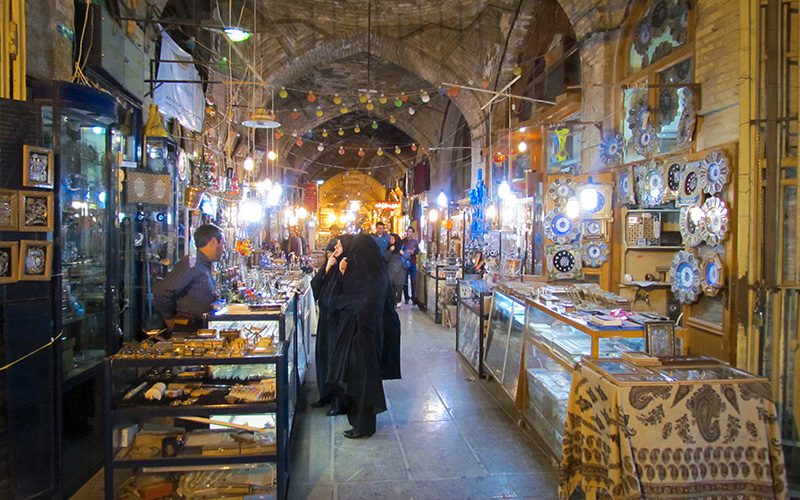
Bazar-i Bozurg is the heart of Tehran’s economy. It resembles the covered bazaars that we see in Anatolia. The building, which is likened to the Istanbul Grand Bazaar , has a much more traditional atmosphere. Dozens of shops, passages, corridors, mosques, squares and pools are intertwined in the bazaar, which creates the impression of a city within the city.
Adorned with the workshops of carpet makers, spice makers, confectioners, tea makers and traditional craftsmen, the bazaar is a magnificent stop to witness the local culture. At the eastern entrance of the bazaar, there are watchmakers, jewelers and shops selling luxury goods.
You do not realize how time flies as you wander through the labyrinthine streets of Tehran Grand Bazaar, one of the world’s longest trading places, devoted to copper, gold, rugs, carpets, spices and handicrafts. If you do not pay attention to the route you walk after entering the bazaar, it is natural to get lost.
2. Sa’dabad Palace
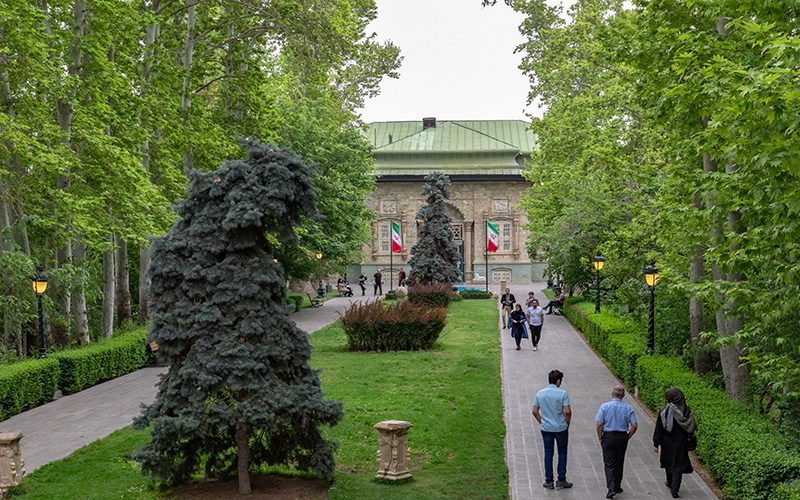
The Sa’Dabad Palace Museum is one of the 18 museums in the complex, located within the Sadabad Cultural-Historical Complex in the Shamiran district, 20 km north of Tehran city centre. The complex, which also includes the White House, the residence of the ousted leader Reza Shah Pahlavi, is the most vivid witness of Iranian history. Sadabad Palace, used as a summer residence by members of the dynasty, is a place where you can witness the recent history and magnificence of Iran.
3. Golestan Palace
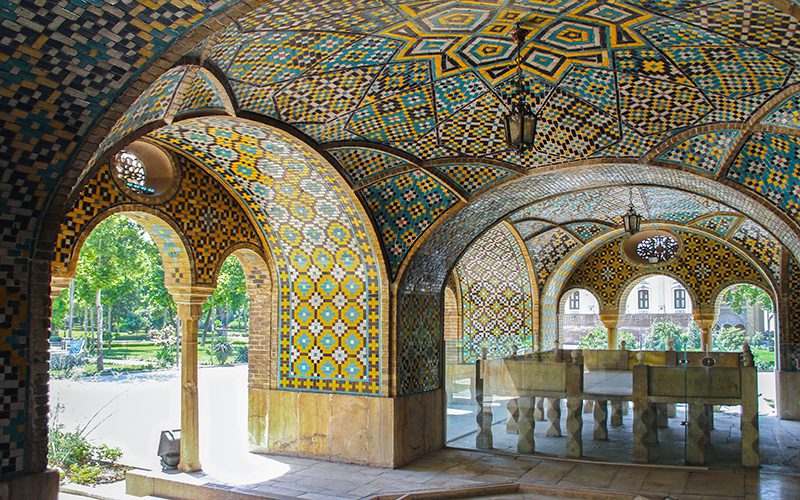
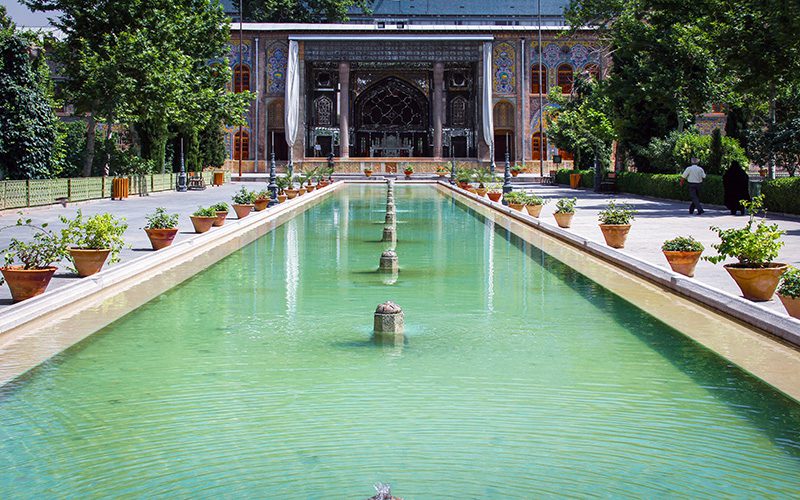
Golestan Palace is the oldest structure in Tehran with its architecture and fine handiwork, located in a rose garden, consisting of 17 different sections. The building, which was built during the Qajar Dynasty, is a palace where you can witness magnificence and aesthetics with its impressively beautiful halls.
Located in the south of Tehran, near Erg Square, Golestan Palace is located in a large rose garden. The palace is one of the must-see places in the city with its elegant handwork, marble coverings and magnificent halls.
There is a separate entrance fee for each hall of the Golestan Palace. The halls in the palace are as follows: Sun Building, Marble Throne Hall, Salute Hall, Museum Hall, Mirrored Hall, Pool Room, Kerim Hanlı Separation, Ivory Building, Berelian Building, Badgir Building, Diamond Hall, Ebyez Palace.
🕘Gülistan Palace visiting hours are 10.00-16.30. The palace is open 4 days a week except Wednesday, Thursday and Friday. 💶Gülistan Palace Museum entrance fee is 150,000 IRR.
4. Tehran Archaeological Museum

The Tehran Archaeological Museum is a rather modest building despite its precious artifacts. The most interesting work of the museum, which is one of the most important archeology museums in Iran, is the clay tablet showing the Laws of Hammurabi. There is also the ‘Salt Man’ in the museum, which lived in the 4th century AD and survived due to the fact that he died while working in the mine and remained in a salty environment.
🕘Tehran Archaeological Museum visiting hours are 10.00-16.30. The museum is open 7 days a week except Fridays. 💶Tehran Archaeological Museum entrance fee is 150,000IRR.
5. Iranian Carpet Museum

The Iranian Carpet Museum is a museum where examples of the traditional carpet art of Iran from the 18th century to the present are exhibited. In the museum, which was opened in 1976 in the area behind the Tulip Park, there are carpets woven by hand in different regions of Iran. In addition to many world-famous Persian carpets, local carpets that were gifted to Iranian state officials in the past are also part of the museum’s collection.
🕘Iran Carpet Museum visiting hours are 09.00-16.30. The museum is open 4 days a week except Wednesday, Thursday and Friday. 💶Gülistan Palace Museum entrance fee is 120,000IRR.
6. National Jewelry Museum
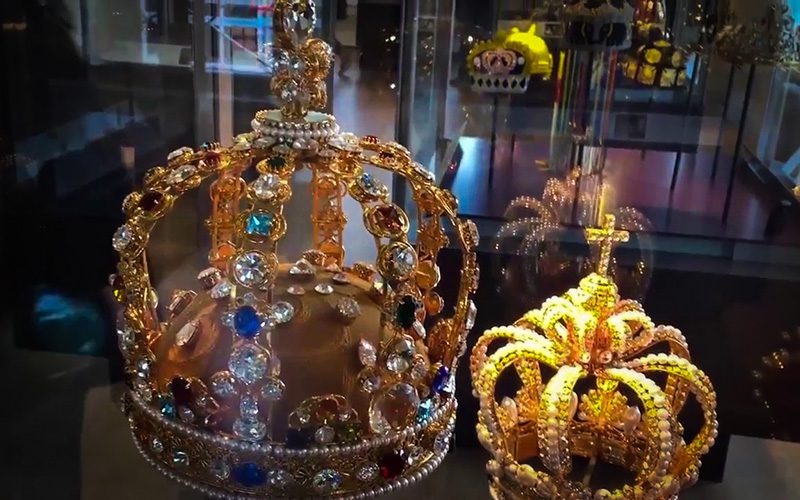
The National Jewelry Museum is a museum displaying very valuable pieces that have caused many political crises and turmoil in the world. The Derya-yı Nûr diamond, the world’s largest pink diamond with a weight of 82 carats, is the most curious piece of the collection in the museum, which has the most valuable jewelery collection in the world.
🕘National Jewelry Museum visiting hours are 10.00-16.30. The museum is open 4 days a week except Wednesday, Thursday and Friday. 💶The National Jewelry Museum entrance fee is 150,000IRR.
7. Tomb of Imam Khomeini
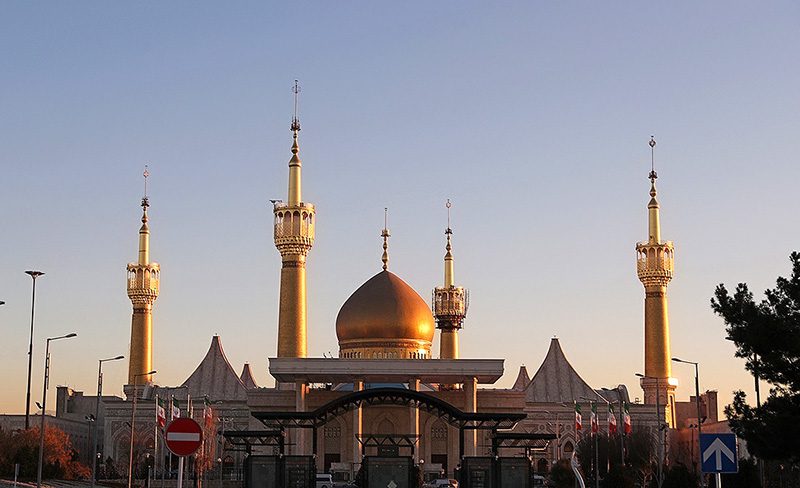
Imam Khomeini’s tomb is located on the Tehran-Kum Highway. Imam Khomeini, who was the leader of the Iranian Islamic Revolution in 1979 and was born in the city of Khomein in 1902, returned to Tehran on February 1, 1979 after 14 years of exile and took part in the realization of the revolution. Hundreds of people visit the grave of Iran’s Leader and Shiite Leader Khomeini every day.
8. Glass and Ceramics Museum
Glass and Ceramics Museum is one of the most important museums in Iran. Located in a 7 thousand square meter garden, the museum exhibits a very large collection of clay pottery works from 4000 BC to the 19th century. The museum has six different exhibition halls.
🕘The visiting hours of the Glass and Ceramics Museum are 10:00-16:30. The museum is open 6 days a week except Fridays. 💶The Glass and Ceramic Museum entrance fee is 150,000IRR.
9. Derbend
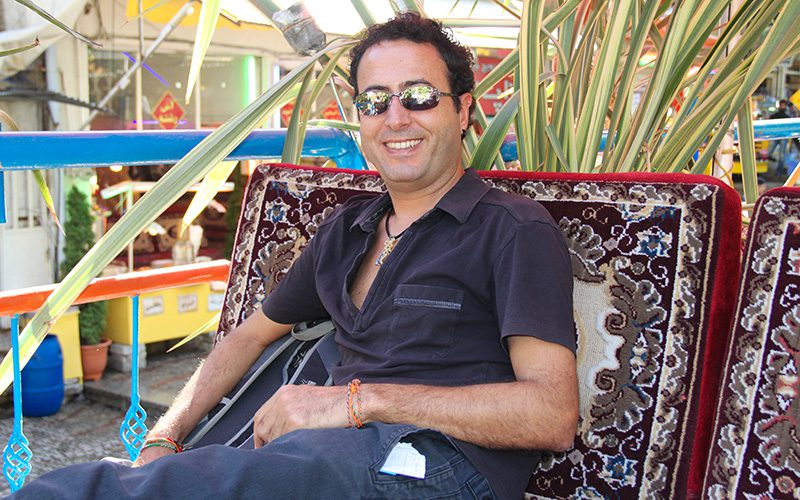
Derbend is the meeting point of those who want to get away from the heavy traffic and stifling atmosphere of the city, in the north of Tehran city centre. Derbend is an entertainment picnic center established at the foot of the mountain at the northernmost tip of the city. You spread out on the floor tables set up in the style of an oriental corner and relieve the tiredness of the day with the tea we drink.
The cafes and restaurants located around the two streams coming from the mountain are the places where the local people socialize, who come to spend time with traditional Iranian dishes and hookahs. Most of the restaurants have thrones furnished in oriental corner style. The panoramic view of Tehran is watched by climbing the cable car to the magnificent hill opposite Derbend.
10. Azadi Tower
The Azadi Tower bears witness to Iran’s modern challenges and victories. The majestic tower, which is definitely one of the places worth seeing in Tehran, is also considered one of the symbols of modern Tehran. Built in 1971 to commemorate the 2500th anniversary of the Persian Empire, the architecture of the Azadi Tower fuses Persian times and Islam, the strong roots of the Iranian people.
This monument, which is made of the best quality white marble from the Isfahan region, is very meaningful for the Iranian people as it is the address of many celebrations and protests. The Azadi Museum , located in the upper part of the tower , has a collection of art and archaeological pieces.
11. Milad Tower
Milad Tower , the sixth tallest tower in the world. Completed in 2008, the tower is part of the Tehran International Trade and Convention Centre. The 12-storey building, the upper part of which includes sections such as private restaurants, congress hall, and hotel, is one of the must-haves of Tehran photographs.
Tehran food and drink
Iranian cuisine reflects the traditional Middle Eastern culinary culture. In Tehran, which is famous for its kebabs, you can find a variety of grilled kebabs all over the city. Soups, rice, chicken, lamb, salad and pickles, meat, desserts and vegetarian delicacies have an important place in the city cuisine.
There are also places in Tehran where you can consume delicacies from the world cuisine and fast food products. Fast food shops are mostly located in shopping malls. Kebab and falafel-style products are sold at the kiosks on the main streets and squares.
Tehran shopping
The best places for shopping in Tehran are the souks and markets. Bazar-ı Bozurg (Grand Bazaar) is a place in Tehran where you can find all kinds of products from needle to thread. The bazaar, which looks like a city within the city, consists of many corridors, passages, mosques, courtyards with pools and squares. Many products, from traditional Persian carpets to spices, from silver and gold jewelry to antiques, are sold in the Grand Bazaar.
Spices and nuts, especially saffron, which has an important place in Iranian cuisine, are among the best gifts to be received from Iran. Backgammon, chess sets, sweets and confectionery products are also among the first things that come to mind when shopping in Tehran.

When to go to Tehran
The best time to travel to Tehran is spring and autumn. The period between May and September is ideal for not being affected by the stifling heat of the city. In Tehran, where a typical steppe climate prevails, winters are cold and snowy, and summers are hot and dry.
Rainfall in the city is mostly seen in the winter season, while precipitation can occur in the spring and autumn seasons. In winter, snowfall and frost are very severe.
How to get to Tehran
The easiest method of transportation from Turkey to Tehran is by plane. Turkish Airlines has direct flights to Tehran 7 days a week from Istanbul Airport. THY has 2 direct flights every day. Total flight time is 2 hours 45 minutes.
Pegasus Airlines has direct flights from Istanbul Sabiha Gökçen Airport to Tehran 7 days a week. The journey takes 3 hours. Qeshm Airlines and Iran Aseman Airlines also have direct flights. Imam Khomeini Airport is 40 km away from the city center of Tehran. There are metro, taxi, transfer vehicle and car rental options to reach the city center from the airport.
The most economical and comfortable way to reach Tehran city center from Imam Khomeini Airport is the metro. With line 1, Tehran city center and the south of the city can be reached. Taxis, on the other hand, carry mostly bargain passengers. Before using a taxi, be sure to decide on your destination and price.
There are reciprocal train services to Tehran, the capital of Iran, and from Mashhad, Isfahan, Shiraz and Tabriz. Train prices in Iran are affordable. It is possible to reach Tehran from Ankara by sleeper trains that run twice a week.
There are regular bus services to Tehran from all cities of Iran. Buses sell tickets in two categories, standard and luxury. Luxury buses have toilets, food and beverage service. There are bus services from Istanbul and Van to Tehran.
Urban transportation in Tehran
There are several methods of transportation in Tehran. In the city, the minibuses called savari are used for the inner city and the surrounding area. There is no separation between men and women in the savaris, which are crowded at all times, as in buses and subways. It is as if each of the drivers is like a Formula driver, it is not possible to sit comfortably in the seat without holding on to something. It is surprising to see that the driver of some of these minibuses is a woman. Dolmuses cost 5,000 Riyals (0.73 TL).
Commercial taxis are used as the last option in Tehran transportation. In the capital, every vehicle in traffic is a potential means of transportation. It is enough to stop by the roadside; Cars passing by in a short time stop and ask where to go, if you agree, it means you found your vehicle.
Contrary to these shabby cars and minibuses cruising in traffic, the city has a developed and modern metro network. If the chosen accommodation is close to the metro line, transportation becomes very easy. In addition, the metro is quite cheap, 3,000 Riyals (0,44 TL).
In Tehran Metro, women can travel in a separate carriage reserved for them. If there are men with them, they are allowed to travel in the wagons with the men. The buses are separated by iron bars in the middle. The front is for men and the back is for women. After the women come from the front and pay the driver, they get in from the middle door and pass to the back.













